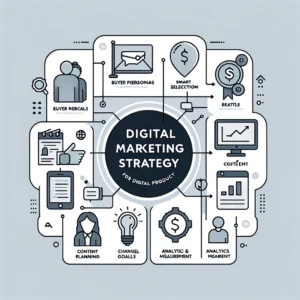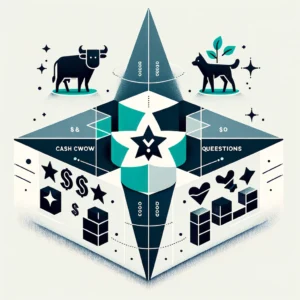Customer segmentation, traditionally a cornerstone of marketing strategies, has evolved into an indispensable tool for developing new products. This process involves dissecting a broad customer base into manageable, homogenous groups based on shared characteristics such as demographics, behaviors, and interests. The precision and effectiveness of customer segmentation directly influence a product’s market fit, appeal, and ultimately its success.
Evolution of Customer Segmentation Practices in the Digital Era
The digital era has revolutionized customer segmentation practices. The advent of advanced technologies like AI and machine learning has enabled more nuanced and dynamic segmentation. These technological advancements allow for real-time data analysis, facilitating a deeper understanding of customer preferences and behaviors. This evolution has not only refined the process but also expanded the potential of customer segmentation in steering product development strategies.
Understanding Customer Segmentation in Product Development
Definition and Importance
Customer segmentation in product development refers to the strategic division of a customer base into distinct groups. Each group shares specific characteristics, needs, or preferences that are relevant to the product being developed. This segmentation is crucial for several reasons. First, it enables product developers to identify and focus on their target market more effectively. Second, it informs decisions about product features, design, pricing, and distribution, ensuring that the product resonates with the intended audience. Lastly, it aids in predicting market trends and customer behaviors, which is vital for long-term product success and innovation.
Historical Context and Evolution
Historically, customer segmentation was more simplistic, often based on broad demographic factors like age, gender, and income. However, the evolution of data analytics and consumer insights has led to more sophisticated segmentation methods. Today, segmentation includes behavioral and psychographic factors, providing a more comprehensive view of the customer. The digital age has further accelerated this evolution, with big data and predictive analytics playing a significant role in refining segmentation strategies. This historical shift underscores the increasing importance of customer segmentation in product development, adapting to changing market dynamics and consumer expectations.
Next, we’ll explore the various methods of customer segmentation specifically used for product development, including demographic, behavioral, and psychographic segmentation, as well as the role of AI and machine learning.
Methods of Customer Segmentation for Product Development

Demographic, Behavioral, and Psychographic Segmentation
Demographic Segmentation: This traditional form of segmentation categorizes customers based on demographic factors like age, gender, income, education, and occupation. It’s fundamental in product development as it provides a basic understanding of who the customers are. For instance, a tech company might develop different product features for millennials compared to baby boomers, based on their varying technology usage patterns.
Behavioral Segmentation: This approach delves into how customers interact with products and services. It includes purchasing behaviors, user status, loyalty, and engagement levels. Behavioral segmentation is particularly useful in tailoring product features and functionalities. For example, frequent users of a product might need more advanced features compared to occasional users.
Psychographic Segmentation: This segmentation focuses on the psychological attributes of customers, such as their lifestyle, values, attitudes, and interests. Psychographic segmentation is essential for aligning a product’s characteristics with the intrinsic motivations and priorities of its target audience. A fitness product, for example, might be developed differently for health enthusiasts compared to casual users.
Technological Advances: AI and Machine Learning in Segmentation
The integration of AI and machine learning has revolutionized customer segmentation by enabling more dynamic and sophisticated analyses. These technologies allow for the processing of large datasets, uncovering patterns and trends that might be invisible to the human eye. AI-driven segmentation can predict customer behaviors, identify emerging trends, and even suggest potential new market segments. This technological advancement has transformed product development, allowing for more personalized, responsive, and effective product offerings.
The next segment of our article will focus on integrating customer segmentation into product development strategy, discussing how to identify target customers and adapt product specifications to different segments.
Integrating Customer Segmentation into Product Development Strategy
Identifying Target Customers
The first critical step in leveraging customer segmentation for product development is accurately identifying the target customer segments. This involves a deep dive into the collected data to understand not just who the customers are, but also their specific needs, preferences, and pain points. This understanding is crucial for aligning the product’s design, features, and marketing strategies with the expectations of the target segments. Businesses can use various analytical tools and market research techniques to identify these segments, ensuring a data-driven approach to product development.
Adapting Product Specifications to Segments
Once the target customer segments are identified, the next step is to tailor the product specifications to meet the unique needs of each segment. This might involve customizing the product design, functionality, pricing, and even the service models for different segments. For example, a software product may offer different subscription models tailored to individual users, small businesses, and large enterprises, each with its specific set of features and pricing. This customization not only enhances customer satisfaction but also increases the product’s market competitiveness.
Next, we will explore real-world case studies to understand how successful companies have applied customer segmentation in their product development processes. This section will include an analysis of strategies and outcomes.
Case Studies: Successful Application of Customer Segmentation
Real-World Examples from Leading Companies
In this section, we will explore several real-world case studies of companies that have effectively implemented customer segmentation in product development, showcasing a range of industries and techniques.
Case Study 1: MetLife
In 2015, MetLife undertook a significant brand discovery process, using data and machine learning to develop a refined view of their customer segments. This approach helped MetLife gain a competitive advantage by better understanding their customers’ needs, attitudes, and behaviors. MetLife moved from basic demographic segmentation to a more nuanced approach based on mindsets and attitudes, utilizing in-depth surveys and advanced segmentation tools. This strategic shift was pivotal in redesigning their market approach and is considered the most significant change to their brand in over 30 years.
Case Study 2: H&M
H&M uses demographic segmentation based on customers’ dates of birth to offer personalized experiences. They provide birthday discounts to customers, which has proven to be a successful strategy in enhancing customer engagement and loyalty. This approach demonstrates the effectiveness of simple yet personalized segmentation strategies in retail.
Case Study 3: Argos
Argos, a retail chain, employs demographic segmentation based on income. By analyzing customers’ past purchases, Argos can estimate their budget and tailor their product offerings accordingly. This method ensures that the right products are presented to the right customer groups, optimizing both customer satisfaction and business performance.
Case Study 4: KLM
KLM uses behavioral segmentation through its frequent flyer program, Flying Blue. This program segments customers based on their travel behavior, offering rewards like miles that can be spent on various services. This segmentation enhances customer loyalty and personalizes the travel experience.
Case Study 5: Comcast
Comcast targets college students in the U.S. using a combination of psychographic and demographic segmentation. Recognizing the significant spending power of this demographic, Comcast tailored special offers specifically for students, successfully tapping into a lucrative market segment.
Case Study 6: Coca-Cola
Coca-Cola employs geographical segmentation for its global product distribution. Their strategy involves tailoring products to local tastes and preferences, such as offering specific beverages only in certain countries or modifying formulas to cater to regional flavor preferences.
These case studies highlight the diverse applications and benefits of customer segmentation in product development, showcasing how different approaches can lead to enhanced market penetration, customer satisfaction, and overall business success.
Analysis of Strategies and Outcomes

Each of these case studies demonstrates the effective use of customer segmentation in developing products that meet the specific needs of different market segments. The success of these strategies lies in their ability to identify and understand the unique characteristics of each segment and to tailor products accordingly. The outcomes include increased customer satisfaction, higher market share, and enhanced brand loyalty.
Our next section will address the challenges and solutions in customer segmentation for product development, offering insights into how to overcome common obstacles and explore innovative solutions and future trends.
Challenges and Solutions in Customer Segmentation for Product Development
Addressing Common Obstacles
One of the major challenges in customer segmentation is the collection and analysis of accurate and relevant data. Companies often struggle with data quality, especially when dealing with large datasets. Additionally, there’s the challenge of keeping up with rapidly changing market dynamics and customer preferences. Another obstacle is ensuring that the segmentation strategy aligns with the overall business goals and integrates seamlessly with other marketing and development processes.
Innovative Solutions and Future Trends
To overcome these challenges, businesses are increasingly turning to advanced data analytics and AI-driven tools. These technologies not only enhance the accuracy of customer segmentation but also provide real-time insights, allowing companies to quickly adapt to market changes. Another solution is the integration of cross-functional teams in the segmentation process, ensuring that insights are holistically integrated into product development strategies. Looking forward, the trend is moving towards even more personalized and dynamic segmentation, with a growing emphasis on predictive analytics and AI-driven personalization techniques.
Conclusion
In conclusion, customer segmentation plays a crucial role in product development, enabling businesses to tailor their products and services to meet the specific needs of different market segments. As we have seen through various case studies, effective customer segmentation can lead to increased market penetration, enhanced customer satisfaction, and overall business success. With the continuous advancement of technology, the potential of customer segmentation in product development is bound to expand, offering exciting opportunities for innovation and growth.



